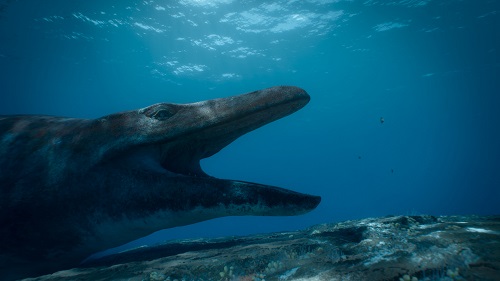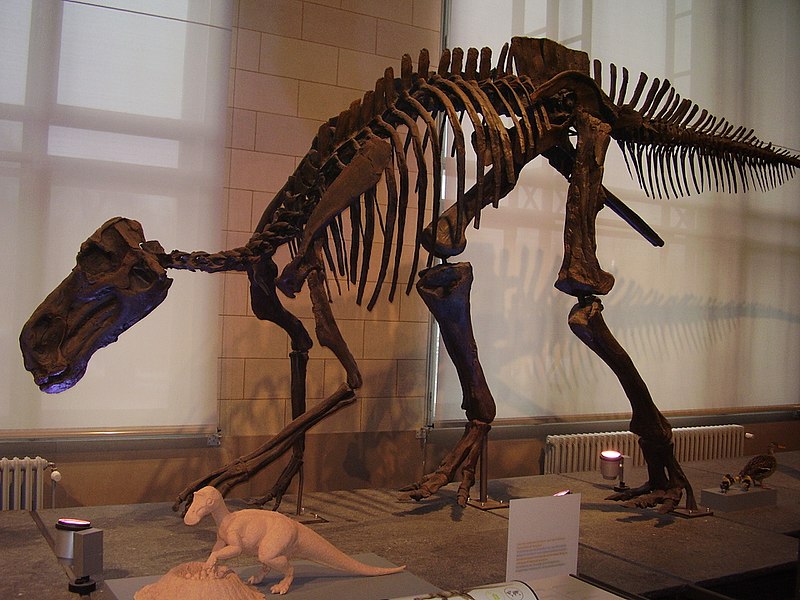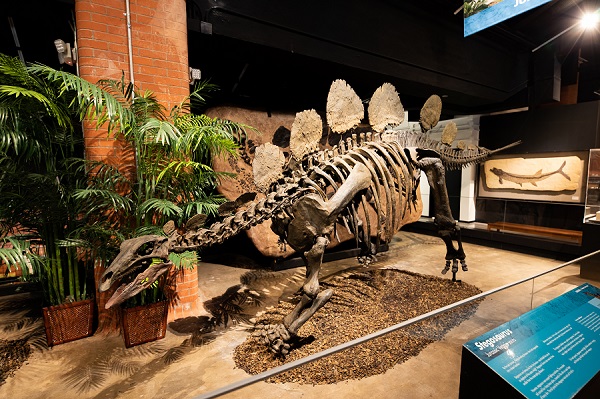Far up in north Texas, past Ft. Worth and Wichita Falls, past the point where the flora turns from trees to shrubs, past a town with a funny name, Megargel, pop. 203, past a massive wind farm with tall white blades lording over thousands of acres of land, and then another, and another, lies the humble community of Seymour. Nestled in the Red River Valley near the southeastern corner of Oklahoma, the little city contains a high school (Go Panthers!), a couple of small hotels, a handful of fast food restaurants and steakhouses, several churches, and a tiny collection of historic prairie-style homes tucked behind Main Street. It’s the kind of town you live in not for the amenities, but for the rich soil and the open sky that stretches to the horizon, and the friendly rural folk, farmers and ranchers, who with their own hands have built it up from nothing.

Wind turbines stand over fields of wheat on one of several wind farms outside Wichita Falls. Kelly Russo
On a weekend, you can enjoy a movie under the stars, take the family to the park, or hop in your SUV and explore the landscape. Nights open above like a planetarium, studded with a billion stars that would delight any gazer, and if you’re up for some night adventure, it’s a great time to search the dirt roads for nocturnal wildlife. But for all this, a trip to Seymour is incomplete without a visit to the pride of the city: the Whiteside Museum of Natural History.
A recent addition to the rural landscape and a welcome diversion from daily life on the ranch in burning heat, the museum has blossomed into a local treasure in a single year. Under the direction of geologist and paleontologist Chris Flis, the once-dusty abandoned building that used to house a car dealership now contains excellent specimens of Permian-era fossils discovered less than 10 miles away in the Craddock bone bed, including the iconic Dimetrodon.

Murals on the Whiteside Museum of Natural History provide a fascinating departure from the rural look of historical storefronts. Kelly Russo
With the help of paleo curators Dave Temple and Dr. Robert Bakker, The Houston Museum of Natural Science has obtained its Permian fossils from this site for the past 11 years. Flis began building the Whiteside collection from the Craddock and other local dig sites, and in the past year, to use Temple’s words, “He’s been busy.”

A model Tyrannosaurus rex head at the Whiteside Museum of Natural History displays the contemporary conception of the dinosaur’s appearance. T. rex had pinfeathers on its head and jaw. We joked he looked a little like John Travolta. Kelly Russo
Racks of specimens jacketed in element-proof plaster-and-burlap casts line the back wall of the Whiteside, and in the fossil prep lab, the skeletons of Edaphosaurus, Diplocaulus, and Eryops line a long table as Flis categorizes the fragments to piece together whole prehistoric animals. These bones, about 280 million years old, represent a time in the fossil record when amphibians first exited the water and dragged themselves across land, eventually developing into early reptiles. And the Craddock bone bed is one of the richest cross-sections of this time period in the world.

At the Whiteside Museum of Natural History, an open jacket of an Eryops skull, a Permian-era amphibian, displays the methods paleontologists use to prepare fossils. Jason Schaefer
Kelly and I visited Seymour, the Craddock and Whiteside the weekend of June 6 to gather information about our site and assist in the celebration of the Whiteside’s first anniversary. While the trip didn’t require any miles-long hike-ins through the backcountry, nor a tent and a sleeping bag since we “camped” in the Sagamar Hotel for four nights, the trip was nothing short of an adventure. We met the locals, played in the dirt, prospected for new fossils, and helped our paleontologists work on our active Dimetrodon digs. The work was sweltering and filthy, but the excitement of discovery, of putting hands on bone that hadn’t seen sunlight in hundreds of millions of years, holding history in the palm of your hand, was enough to keep us out in the heat, fueled by the magic of wonder.

The spinal column and fin spines of an Edaphosaurus, a Permian-era land herbivore, line a long table in the fossil prep lab at the Whiteside Museum of Natural History. Kelly Russo
The first day, we didn’t know what we were getting ourselves into. To beat the heat, Temple prefers to rise early to eat breakfast around 6:45 a.m. at the local Maverick diner, where Seymour’s agriculturalists congregate for any combination of bacon, eggs, sausage, potatoes, and biscuits. Kelly doesn’t drink coffee, but I required about a half-gallon just to get the day started. I’m a late riser.

Kelly (right), and educator and HMNS volunteer Shana Steinhardt, photograph a Texas horned lizard on the Craddock ranch near Seymour. Jason Schaefer
After the rich meal, plenty of calories to burn, our group caravaned off to the Craddock, a 4,400-acre ranch down a lonely county road. A dirt truck path carved through the mesquite and cedar brush was our only access to the dig site. Normally, we were told, the land is dry and brown, more a desert than a semi-arid valley, but following heavy rainfall two weeks prior from the same storm system that flooded Houston in May, the land was the greenest it had been in a decade. The rain caused an explosion of life, giving us five sightings of the Texas horned lizard, our state reptile, now listed as a threatened species due to its rapid decline in recent years.

This Texas horned lizard, listed as threatened by the State of Texas, was one of five sightings that we had during the course of our trip. Jason Schaefer
But what’s good for the land ain’t so hot for digging fossils. On the way out to the site, Temple worried the mud would be too sticky for our company vehicles to push through, and even if we did, that the soil at the site might be too wet. Paleontologists depend on dry conditions to fleck away sedimentary rock with delicate tools. Wet ground means a difficult dig and sometimes the loss of specimens.

Paleontologists and volunteers from the Houston Museum of Natural Science and Seymour locals gather at our dig site in the Craddock Bone Bed. Kelly Russo
Conditions weren’t as bad as we thought, however. The site was about as good as it could get in spite of the rain. We cleaned up some litter, tarpaulin fragments and other jacketing materials that had aged in the weather, and set to work removing a pile of scree that had fallen in the rains and partially covered our biggest jacket. You can dig with anything you can prod the ground with, breaking up the clay into dust like a toothpick cleaning teeth, but Temple prefers a bayonet with a modified pommel to stab the soil and unlock it with a quarter turn. Others used screwdrivers, dental picks, or awls. Dr. Bakker hadn’t yet joined us; he would come a day later.

A regular sight on the Craddock, Donald Gayle Coltharpe, lease-holder for the Craddock ranch, carries his dog Sissy perched on his shoulder. Kelly Russo
We dug slowly, handful by handful, making sure no bone fragments were lost in the soil we collected in buckets and discarded over the side of a nearby ravine. That first day, with the help of volunteers Dr. Mitch Fruitstone and Shana Steinhardt, Kelly and I learned about the process of extracting bone from the dirt. Using whatever digging tool you choose, you enter the soil at a shallow angle, digging into the side of a hill rather than down until your pick hits solid rock. It’s easier than you’d think to notice the difference. Though the sediment has hardened with time, it crumbles away easily. Bone fragments and rock will not break apart unless struck with an implement, hence the ginger digging. The idea is to remove the dirt from the rock, not the rock from the dirt. Each significant sample that is discovered must have its depth in the soil and location relative to other fossils recorded to place it in the geological record.

The plaster jacket we hoped to flip over the weekend and transport back to the museum was buried under a layer of sediment after heavy spring rains. Jason Schaefer
The goal of the day was to “flip the jacket,” that is, carve the dirt out from under a fossil-rich lump of sediment until it stands on a pedestal, then turn it upside-down to plaster the underside. When the specimen is completely jacketed, it’s ready for transportation. Contrary to what the movies may suggest, paleontologists do the painstaking final prep work for fossils not in the field, but in a controlled environment, a laboratory with fine, electric-powered implements.

Using a replica bayonet as a digging tool, HMNS Paleontologist Dave Temple teaches me how to uncover the plaster jacket without harming it. Kelly Russo
The plaster field jacket is made of layers like papier mache. Diggers begin with a separation layer, usually aluminum foil, so the plaster doesn’t stick to the specimens, and then dip fragments of material like burlap or cotton into plaster of Paris that hardens in minutes. Once the specimen is completely covered and dry, it is marked for cataloging so paleontologists know what it contains and its upright orientation when they return to it days, weeks, months, or sometimes years later.

A jacketed Dimetrodon rib specimen from a neighboring dig site illustrates both the layering and soil removal techniques paleontologists use to preserve the integrity of fossilized bones. Kelly Russo
By one in the afternoon, we broke for lunch and to tour a nearby longhorn ranch. We had dug no more than a foot into the soil around the jacket, and Temple was nearly bitten by a four-inch centipede, a common sight for this part of Texas, but it was a good start to the weekend, with much more adventure to come.
Author’s note: This is the first part in a series detailing the HMNS excursion to the Craddock Bone Bed.








